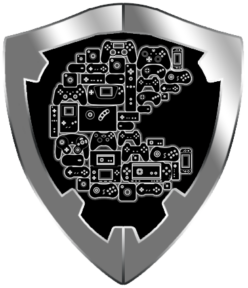Podcast NewsInside, siga e ouça mensalmente no Spotify:
O Retroarch
O RetroArch é um programa que permite aos usuários emular diferentes plataformas de jogos em um só lugar. Ele é projetado como um frontend para a API libretro, que fornece uma interface padrão para acessar funções de emulação em diferentes núcleos de libretro. Isso permite que os usuários carreguem e usem diferentes núcleos de libretro para emular diferentes plataformas de jogos sem precisar sair do RetroArch. Alguns exemplos populares de núcleos de libretro incluem emuladores de sistemas de videogame, como o Nintendo Entertainment System (NES) ou o Sega Genesis, e mecanismos de jogos, como o Doom ou o Final Burn Alpha. O RetroArch também pode ser usado para executar programas 3D mais gerais que usem a API do libretro.
API
Uma API é um conjunto de ferramentas que permite que diferentes aplicativos se comuniquem e compartilhem dados. Ela define como os aplicativos podem se comunicar e acessar os dados e recursos uns dos outros. Isso é útil para permitir que um aplicativo acesse dados de outro aplicativo sem precisar saber como esses dados são armazenados ou como o aplicativo funciona internamente.
A LibRetro
Embora o RetroArch seja o frontend de referência para o libretro, vários outros projetos usaram a libretro é uma API que fornece uma interface padrão para acessar funções de emulação em diferentes núcleos de libretro. Ela expõe callbacks genéricos de áudio, vídeo e entrada, permitindo que os núcleos de libretro se comuniquem com o frontend, como o RetroArch, de forma consistente. Isso permite que os núcleos de libretro sejam facilmente portáveis para diferentes plataformas, simplificando o processo de emular diferentes plataformas de jogos em um só lugar. Além do RetroArch, vários outros projetos usam a interface do libretro para incluir suporte para emuladores e mecanismos de jogo. O libretro é um projeto de código aberto e gratuito, disponível para qualquer pessoa usar.
Atualmente suportando as seguintes plataformas:
- DOS
- Windows 11
- Windows 10
- Windows 8
- Windows 7
- Windows Vista
- Windows XP
- Windows Millennium
- Windows 2000
- Windows NT 3.5
- Windows 98
- Windows 95
- Linux
- Emscripten (WebAssembly and JavaScript)
- FreeBSD
- NetBSD
- OpenBSD
- Haiku
- Solaris
- Apple macOS (PPC, x86-32 and x86-64)
- Apple iOS
- Apple tvOS
- Android (2.x to most recent version)
- PlayStation 2
- PlayStation 3
- PlayStation Portable
- PlayStation Vita
- Original Microsoft Xbox
- Microsoft Xbox 360 (Libxenon/XeXDK)
- Microsoft Xbox One
- Microsoft Xbox Series S/X
- Nintendo GameCube
- Nintendo Wii
- Nintendo Wii U
- Nintendo 3DS/2DS
- Nintendo Switch
- Nintendo NES/SNES Classic Edition
- Raspberry Pi
- Blackberry
- OpenDingux
- Miyoo
- RS90
- RetroFW
As mudanças podem ser vistas abaixo, para as pessoas mais curiosas e técnicas:
SE ESTIVER COM DUVIDAS E PRECISAR DE AJUDA, ACESSO NOSSO FÓRUM NO DISCORD!

![[Emulação] Retroarch 1.14.0: O Emulador de Todos os Emuladores](https://www.newsinside.org/wp-content/uploads/2022/10/retroarch-webp.jpg)
![[Emulação] Lakka 3.0 – Retrogaming de Qualidade](https://www.newsinside.org/wp-content/uploads/2021/05/lakka.png)
![[Lançamento] Retroarch 1.8.8 PS2 com maior compatibilidade.](https://www.newsinside.org/wp-content/uploads/2020/05/ps2r88.png)